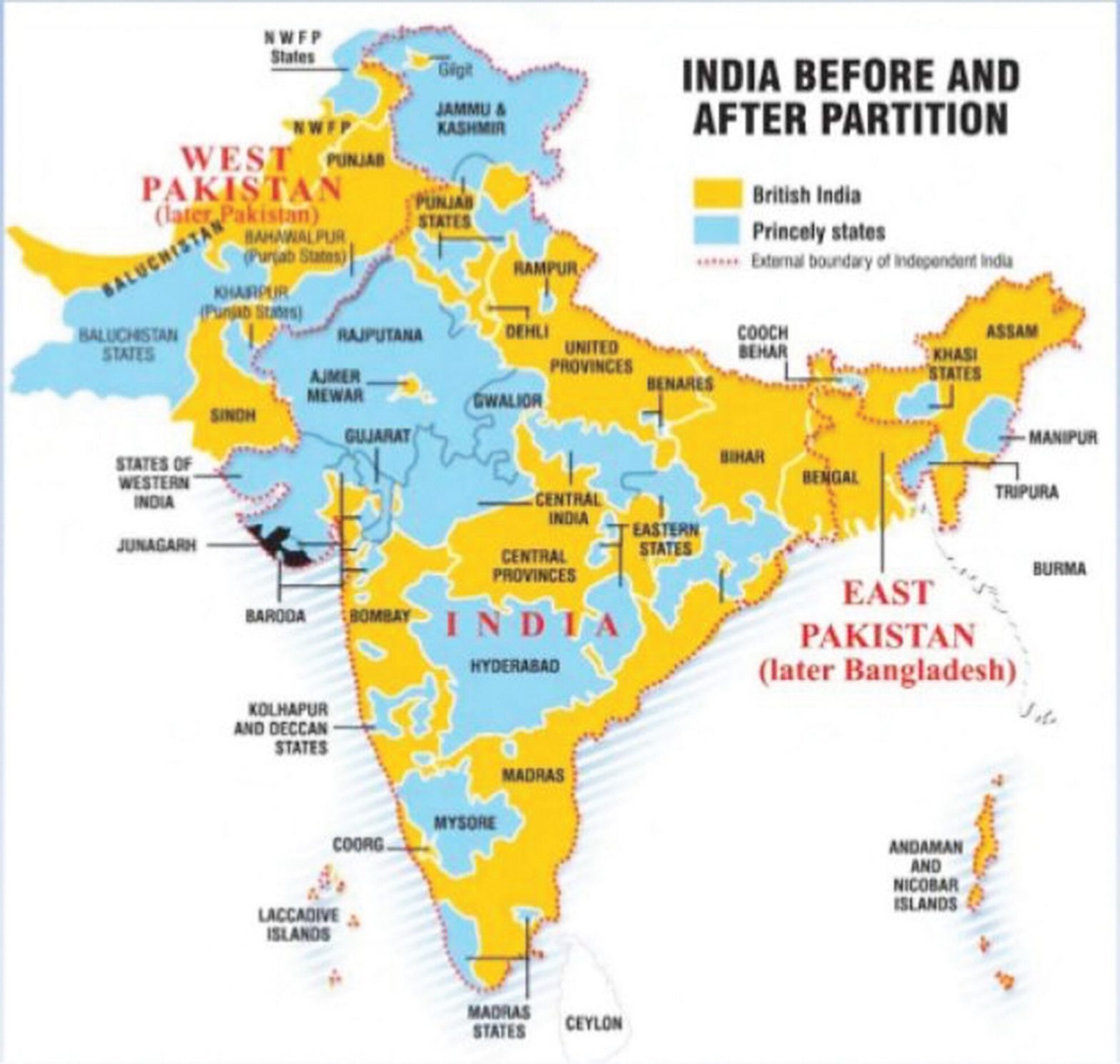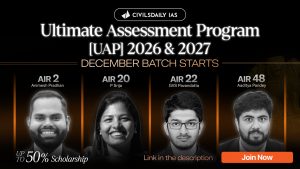| Smash 2025 Adv test 10Q14. Elaborate on the dual contribution of Sardar Vallabhbhai Patel in integrating princely states and laying the foundation of a strong administrative framework. |
| PYQ. Assess the main administrative issues and socio-cultural problems in the integration process of Indian Princely States. (2021) |
“A nation is not made overnight but is built brick by brick through shared struggles and collective vision.” – This aptly describes India’s early years after independence, when leaders sought to transform a newly freed, partition-torn country into a united, democratic, and modern nation-state.
Challenges in the Early Phase of Independence
- Polity
- Partition and Communal Violence (15 million displaced, 1-2 Million deaths).
- Integration of Princely States like Hyderabad, Junagadh, and Kashmir.
- Refugee Rehabilitation after partition, especially in Punjab and Bengal.
- Regional and Linguistic Movements demanding state reorganization.
- Economy
- Poverty and Unemployment (70% Poverty rate).
- Food Insecurity & Famines
- Weak Industrial Base and lack of Capital and Infrastructure.
- Inequality in Land Ownership.
- Education & Social Development
- High Illiteracy Rates (over 80% in 1951 Census).
- Limited Access to Higher Education and professional training.
- Caste Discrimination and Untouchability despite legal abolition.
- International Relations
- Kashmir Conflict with Pakistan (1947–48).
- Border Disputes with China, culminating in the 1962 War.
- Cold War Pressures to align with either USA or USSR.
- Economic Aid Dependency on global powers and institutions. (PL-480)
Consolidation process during the early phase of independence
- Polity
- Integration of Princely States (1947–50): Sardar Patel and V.P. Menon brought 562 princely states into the Union (e.g., Hyderabad, Junagadh, Kashmir).
- Adoption of the Constitution (1950): Introduced parliamentary democracy, fundamental rights, directive principles, and secular governance.
- Reorganization of States (1956): Linguistic states created to balance diversity and unity.
- Democratic Deepening: Conduct of first general elections (1951–52), universal adult franchise.
- Economy
- Planning Framework: Launch of Five-Year Plans (1951 onwards); Planning Commission established.
- Land Reforms: Abolition of zamindari system, tenancy reforms, land ceilings.
- Public Sector Push: Creation of PSUs, steel plants, dams (Bhakra Nangal, Hirakud) – called “temples of modern India” by Nehru.
- Agriculture & Irrigation: Community development programmes; Green Revolution’s preparatory stage.
- Education & Social Development
- Commitment to universal access to primary education as per Directive Principles (Article 45).
- In the First Five Year Plan 7.9% of total plan outlay was allocated for education.
- Higher Education: University Grants Commission (1956) for coordinated funding and academic standards. Establishment of IITs (1951 onwards), UGC (1956), AIIMS (1956).
- Scientific Policy Resolution (1958): Declared science and technology vital for development.
- Radhakrishnan Commission (1948) recommended expansion of universities, focus on science, and link education with national needs
- Secondary Education Commission (1952–53): Suggested diversification into academic and vocational streams.
- International Relations
- Non-Alignment Movement (NAM): Under Nehru, India pursued independent foreign policy, balancing Cold War blocs.
- Asian and Afro-Asian Leadership: Role in Bandung Conference (1955), promoting anti-colonial solidarity.
- Peace and Security: Advocacy of Panchsheel Agreement (1954) with China, though later tested by 1962 war.
- Global Standing: Champion of disarmament, anti-apartheid, and UN peacekeeping.
The early decades of independence were a test of India’s resilience as a new nation. The consolidation efforts ensured that India, unlike many newly decolonized nations, remained united, democratic, and forward-looking.


